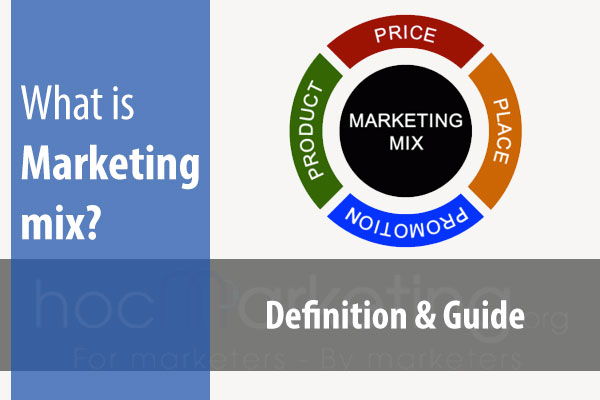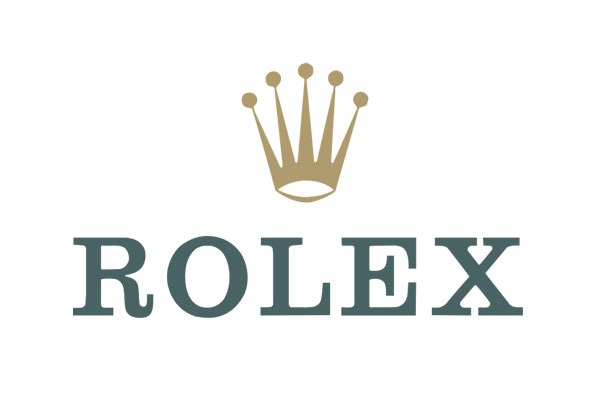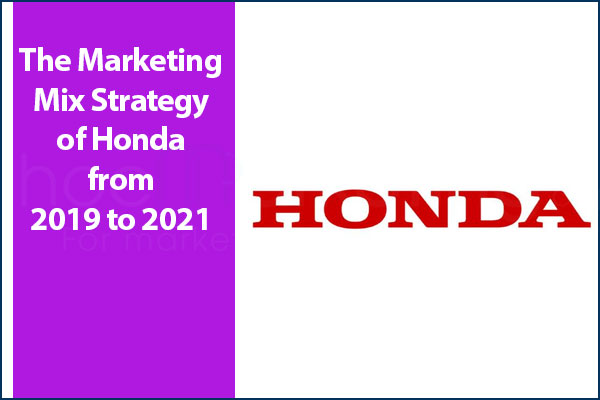
The Marketing Mix Strategy of Unilever from 2019 to 2021

Unilever is one of the world's largest consumer goods companies, with a presence in over 190 countries. Founded in 1929, the company has a rich history of delivering innovative and sustainable products to a diverse range of consumers. Over the past few years, Unilever has been implementing various marketing strategies
Unilever is one of the world's largest consumer goods companies, with a presence in over 190 countries. Founded in 1929, the company has a rich history of delivering innovative and sustainable products to a diverse range of consumers. Over the past few years, Unilever has been implementing various marketing strategies to strengthen its position in the market. In this blog post, we will explore Unilever's marketing mix strategy from 2019 to 2021, covering the four Ps of marketing: product, price, place, and promotion. By examining Unilever's approach to each of these elements, we can gain insights into how the company has remained successful in a highly competitive industry.
A brief of Unilever
Unilever is a British-Dutch multinational consumer goods company that was founded in 1929. The company operates in over 190 countries, and its products include food, beverages, cleaning agents, and personal care products. Some of the most popular brands under the Unilever umbrella include Axe, Dove, Knorr, Lipton, and Hellmann's.
Unilever has a strong focus on sustainability and ethical business practices, with the company's Sustainable Living Plan outlining its commitment to reducing its environmental impact and improving the livelihoods of its suppliers and employees.
As one of the largest consumer goods companies in the world, Unilever's Marketing Mix Strategy has been a key driver of its success. In this blog post, we will explore the typical highlights of Unilever's Marketing Mix Strategy from 2019 to 2021, as well as the specific strategies employed by the company in the areas of Product, Price, Place, and Promotion.
Typical highlights in Unilever's Marketing Mix Strategy 2019 - 2021
Unilever is a multinational consumer goods company that has been around for more than 90 years, and is known for its wide range of products that include food, beverages, cleaning agents, and personal care items. In 2019, Unilever's marketing mix strategy underwent some changes, and these changes continued to be implemented in 2020 and 2021.
One of the key highlights of Unilever's marketing mix strategy from 2019 to 2021 is its focus on sustainability. The company has been actively promoting eco-friendly and sustainable products, and has set ambitious targets to reduce its environmental impact. For instance, Unilever aims to make all of its packaging reusable or recyclable by 2025, and to halve its use of virgin plastic by the same year.
Another important aspect of Unilever's marketing mix strategy is its emphasis on diversity and inclusion. The company has made a conscious effort to diversify its workforce and to create a culture that is inclusive and welcoming to employees from all backgrounds. This has been reflected in Unilever's advertising campaigns, which have featured people from diverse ethnicities, genders, and age groups.
In terms of product innovation, Unilever has been focusing on developing new products that cater to changing consumer preferences. For example, the company has launched a range of plant-based meat alternatives under its brand The Vegetarian Butcher, and has also introduced vegan and gluten-free versions of some of its popular ice cream products.
Unilever has also been experimenting with new pricing strategies, such as dynamic pricing, which involves adjusting prices based on demand and other factors. The company has also been using promotional pricing to drive sales, such as offering discounts on its products during holiday seasons.
In terms of distribution, Unilever has been expanding its e-commerce capabilities and has also been working on improving its supply chain and logistics to ensure that its products are available to consumers in a timely and efficient manner.
Finally, Unilever has been using a variety of promotional tactics to reach its target audience, including influencer marketing, social media advertising, and experiential marketing. The company has also been leveraging the power of data to personalize its marketing messages and to target consumers more effectively.
Overall, Unilever's marketing mix strategy from 2019 to 2021 has been characterized by a strong focus on sustainability, diversity and inclusion, product innovation, pricing strategies, distribution, and promotional tactics. These efforts have helped the company to stay relevant in a rapidly changing market and to appeal to consumers who are looking for products that align with their values and preferences.
Product in Unilever's Marketing Mix Strategy 2019 - 2021
Unilever is a global consumer goods company that manufactures and sells a wide range of products, including foods, personal care products, and home care products. In its marketing mix strategy from 2019 to 2021, Unilever focused on enhancing its product portfolio by introducing new products, improving existing ones and expanding its product lines.
To begin with, Unilever has been introducing new products to cater to changing customer needs and preferences. For instance, in 2019, the company introduced a range of vegan and vegetarian products under its plant-based meat substitute brand, The Vegetarian Butcher. This was in response to the growing demand for plant-based food products among consumers.
Besides, Unilever has been investing in research and development to improve its existing products. For example, the company has been working on reducing the sugar content in its products, including ice creams and beverages, to cater to health-conscious consumers.
Furthermore, Unilever has been expanding its product lines to target new customer segments. In 2020, the company acquired SmartyPants Vitamins, a US-based brand that manufactures vitamins for adults and children. This acquisition enabled Unilever to enter the health and wellness market and reach a new set of customers.
In conclusion, Unilever's product strategy from 2019 to 2021 has been centered on introducing new products, improving existing ones, and expanding its product lines. By doing so, the company has been able to cater to changing customer needs and preferences and enter new markets.
Price in Unilever's Marketing Mix Strategy 2019 - 2021
Pricing is an integral part of any marketing strategy, and Unilever has been able to implement a successful pricing strategy in recent years. The company has been able to balance its pricing strategy so that it remains competitive while still maintaining profitability.
One of the key pricing strategies used by Unilever is value-based pricing. This means that the company sets its prices based on the perceived value of its products to the customers. Unilever has been able to create a strong brand image over the years, which has helped the company to establish a premium pricing strategy for some of its products in the market.
Another pricing strategy used by Unilever is penetration pricing. This strategy involves setting a lower price for a new product in the market to attract customers and gain a larger market share. Unilever has been able to use this strategy effectively for some of its products, such as its home care products.
In addition to these pricing strategies, Unilever has also been able to implement a dynamic pricing strategy. This involves setting different prices for products based on various factors, such as location, time of day, and customer demographics. Unilever has been able to use this strategy effectively in the e-commerce space, where prices can be adjusted in real-time based on demand and supply.
Overall, Unilever has been able to implement a successful pricing strategy that has helped the company to remain competitive in the market while still maintaining profitability. By using a combination of value-based pricing, penetration pricing, and dynamic pricing, Unilever has been able to create a pricing strategy that is flexible and adaptable to the ever-changing market conditions.
Place in Unilever's Marketing Mix Strategy 2019 - 2021
Unilever is a consumer goods company that operates globally, with a presence in over 190 countries. The company's products are sold through various distribution channels, including supermarkets, convenience stores, online marketplaces, and direct sales. In its marketing mix strategy from 2019 to 2021, Unilever focused on optimizing its distribution channels to improve its reach and customer experience.
Unilever's distribution strategy involved a mix of traditional and modern channels. The company leveraged its partnerships with retailers and distributors to ensure its products were available in physical stores, while also investing in its e-commerce capabilities to reach customers online. Unilever also introduced innovative distribution channels, such as vending machines and mobile apps, to provide customers with more convenient access to its products.
One of the key initiatives in Unilever's distribution strategy was its focus on sustainability. The company aimed to reduce its carbon footprint and improve its environmental impact by optimizing its logistics and transportation operations. Unilever also invested in sustainable packaging solutions to reduce waste and improve the recyclability of its products.
Another important aspect of Unilever's place strategy was its focus on emerging markets. The company identified the potential for growth in developing countries and invested in expanding its distribution channels in these markets. Unilever also introduced products tailored to the specific needs and preferences of customers in these regions, such as affordable and locally sourced ingredients.
Overall, Unilever's place strategy from 2019 to 2021 was focused on improving its distribution channels, optimizing its logistics operations, and expanding its reach in emerging markets. The company's efforts in sustainability and innovation also played a significant role in its place strategy, highlighting its commitment to responsible business practices and customer satisfaction.
Promotion in Unilever's Marketing Mix Strategy 2019 - 2021
Unilever is a well-known consumer goods company that has been around for over a century. In order to stay competitive in the market, Unilever has implemented a comprehensive marketing mix strategy that includes product, price, place, and promotion. In this section, we will focus on Unilever's promotion strategy from 2019 to 2021.
Unilever's promotion strategy is designed to create awareness, interest, desire, and action among its target audience. The company uses a variety of promotional tools to achieve this, including advertising, sales promotion, public relations, personal selling, and direct marketing.
Advertising is a key component of Unilever's promotion strategy. The company uses both traditional and digital media to reach its target audience. For example, Unilever runs TV commercials, print ads, and online ads to promote its products. The company also uses social media platforms like Facebook, Twitter, and Instagram to engage with its customers and build brand loyalty.
In addition to advertising, Unilever uses sales promotion to stimulate demand for its products. The company offers discounts, coupons, and other incentives to encourage customers to try its products. For example, Unilever may offer a buy-one-get-one-free promotion or a free gift with purchase to encourage customers to try new products or to stock up on existing ones.
Public relations is another important component of Unilever's promotion strategy. The company works closely with media outlets to generate positive publicity and build brand awareness. For example, Unilever may sponsor a charity event or launch a new environmental initiative to generate positive media coverage.
Personal selling is also an important part of Unilever's promotion strategy. The company uses sales representatives to visit retailers and promote its products. These representatives provide product demonstrations, answer questions, and help retailers to stock and sell Unilever's products.
Finally, direct marketing is used by Unilever to reach its target audience more effectively. The company uses email marketing, direct mail, and other forms of direct communication to promote its products and services.
In conclusion, Unilever's promotion strategy from 2019 to 2021 has been designed to create awareness, interest, desire, and action among its target audience. Through the use of advertising, sales promotion, public relations, personal selling, and direct marketing, Unilever has been able to effectively promote its products and build brand loyalty among its customers.
Summary
Unilever, a multinational consumer goods company, has been implementing a well-crafted marketing mix strategy from 2019 to 2021. The marketing mix strategy is a crucial aspect of any marketing plan that helps businesses achieve their marketing goals by utilizing the four Ps - product, price, place, and promotion. In this blog post, we will take a closer look at Unilever's marketing mix strategy and its impact on their business.
Firstly, let's briefly talk about Unilever. Unilever is a British-Dutch company that produces a wide range of products, including food, beverages, cleaning agents, and personal care products. With its headquarters in London, Unilever operates in more than 190 countries worldwide and employs over 155,000 people.
Now, let's dive into Unilever's marketing mix strategy from 2019 to 2021. Unilever has been focusing on enhancing its product portfolio by introducing innovative products that cater to the evolving needs of its customers. They have also been emphasizing on sustainability by making their products eco-friendly and reducing their carbon footprint. Unilever has been working towards reducing plastic waste by introducing refillable packaging for their products.
In terms of price, Unilever has been using a value-based pricing strategy. They have been positioning their products at a price that justifies their value and quality. By doing so, Unilever has been able to maintain its market share and improve its profitability.
Regarding place, Unilever has been expanding its distribution channels to reach a wider audience. They have been investing in e-commerce platforms and partnering with online retailers to make their products more accessible to customers. Unilever has also been focusing on expanding its presence in emerging markets by collaborating with local retailers.
Finally, Unilever's promotion strategy has been very effective in creating brand awareness and increasing customer engagement. They have been using a mix of traditional and digital marketing channels to promote their products. Unilever has been leveraging social media platforms to engage with customers and create a strong online presence.
In conclusion, Unilever's marketing mix strategy from 2019 to 2021 has been very effective in achieving their marketing goals. By focusing on product innovation, sustainability, value-based pricing, expanding distribution channels, and effective promotion strategies, Unilever has been able to maintain its market share and increase its profitability. Unilever's commitment to sustainability and reducing plastic waste by introducing eco-friendly products is commendable and sets an excellent example for other companies to follow.















